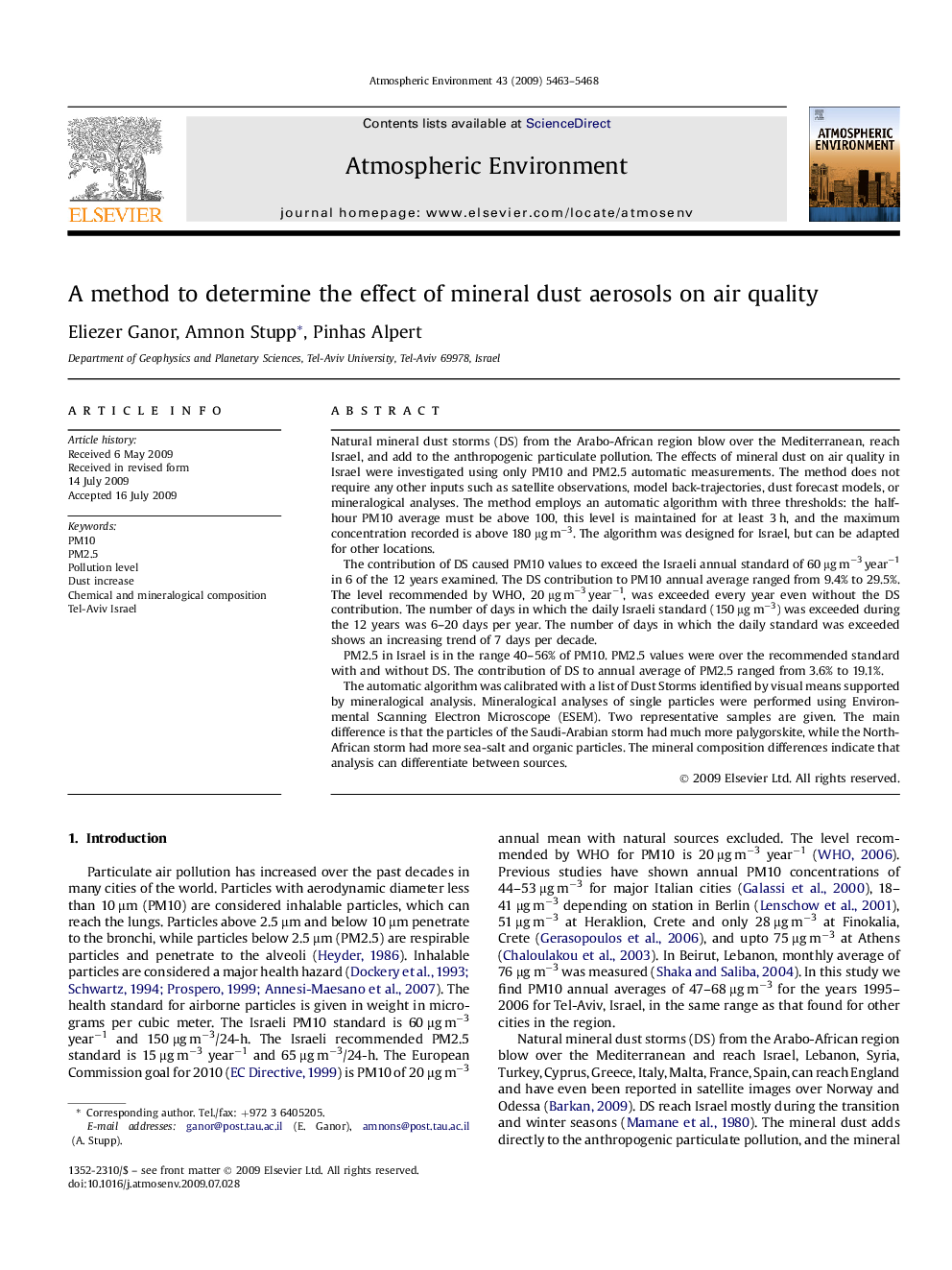| کد مقاله | کد نشریه | سال انتشار | مقاله انگلیسی | نسخه تمام متن |
|---|---|---|---|---|
| 4441128 | 1311093 | 2009 | 6 صفحه PDF | دانلود رایگان |

Natural mineral dust storms (DS) from the Arabo-African region blow over the Mediterranean, reach Israel, and add to the anthropogenic particulate pollution. The effects of mineral dust on air quality in Israel were investigated using only PM10 and PM2.5 automatic measurements. The method does not require any other inputs such as satellite observations, model back-trajectories, dust forecast models, or mineralogical analyses. The method employs an automatic algorithm with three thresholds: the half-hour PM10 average must be above 100, this level is maintained for at least 3 h, and the maximum concentration recorded is above 180 μg m−3. The algorithm was designed for Israel, but can be adapted for other locations.The contribution of DS caused PM10 values to exceed the Israeli annual standard of 60 μg m−3 year−1 in 6 of the 12 years examined. The DS contribution to PM10 annual average ranged from 9.4% to 29.5%. The level recommended by WHO, 20 μg m−3 year−1, was exceeded every year even without the DS contribution. The number of days in which the daily Israeli standard (150 μg m−3) was exceeded during the 12 years was 6–20 days per year. The number of days in which the daily standard was exceeded shows an increasing trend of 7 days per decade.PM2.5 in Israel is in the range 40–56% of PM10. PM2.5 values were over the recommended standard with and without DS. The contribution of DS to annual average of PM2.5 ranged from 3.6% to 19.1%.The automatic algorithm was calibrated with a list of Dust Storms identified by visual means supported by mineralogical analysis. Mineralogical analyses of single particles were performed using Environmental Scanning Electron Microscope (ESEM). Two representative samples are given. The main difference is that the particles of the Saudi-Arabian storm had much more palygorskite, while the North-African storm had more sea-salt and organic particles. The mineral composition differences indicate that analysis can differentiate between sources.
Journal: Atmospheric Environment - Volume 43, Issue 34, November 2009, Pages 5463–5468